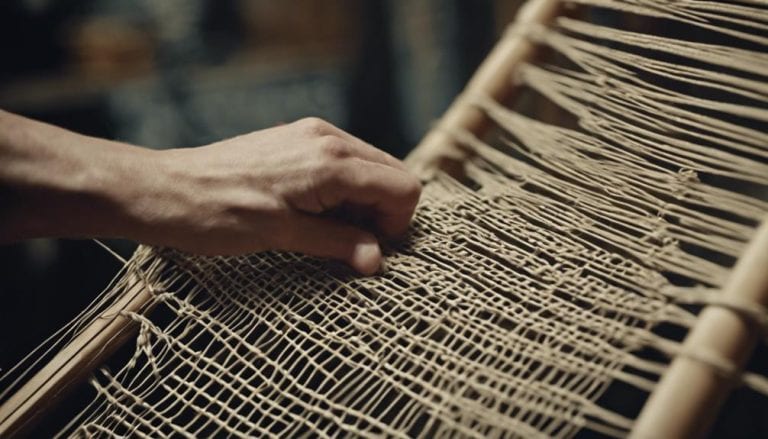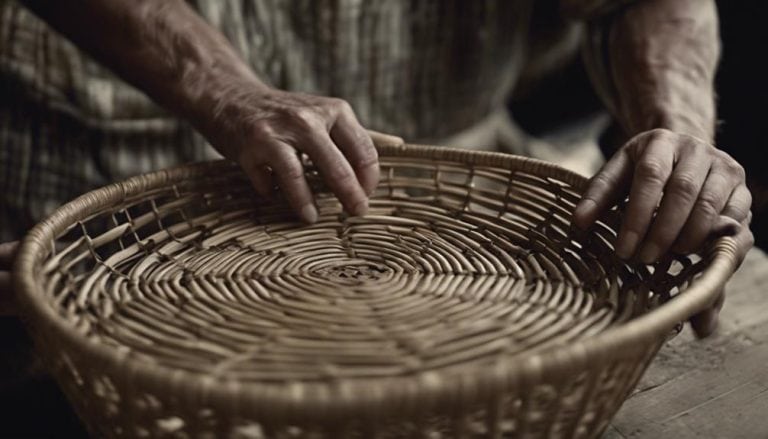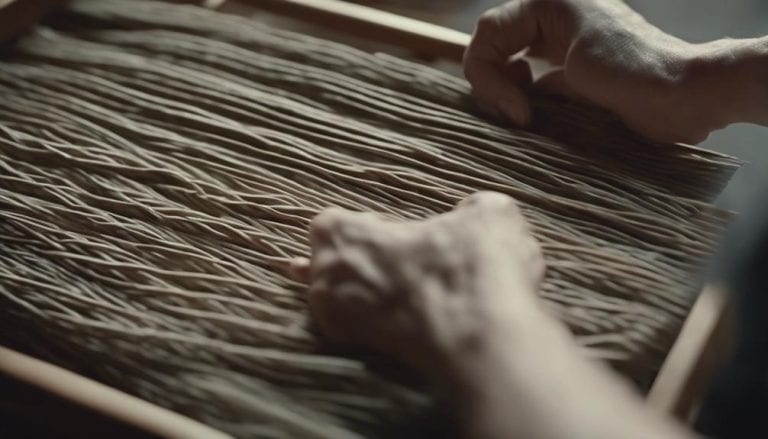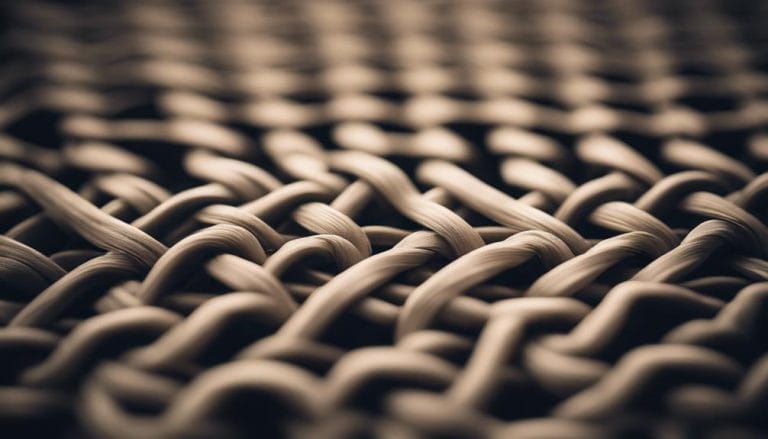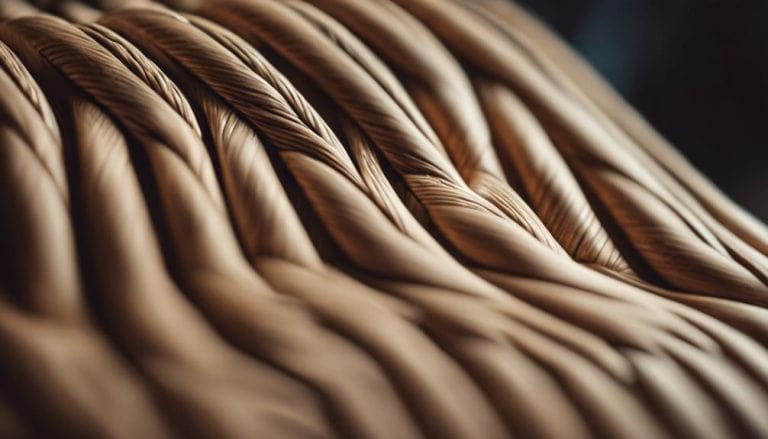Rush Reeds and Danish Cord Weaving
Embarking on the journey of exploring the intricate world of rush reeds and Danish cord weaving reveals a realm where craftsmanship meets functionality. The subtle intricacies of intertwining fibers to form sturdy yet aesthetically pleasing seat weaves beckon enthusiasts to uncover the secrets behind these time-honored techniques. As each thread is meticulously placed, tradition and artistry intertwine, inviting us to discover the hidden gems within furniture weaving.
Rush reeds and Danish cord weaving are traditional techniques used in chair seat weaving. They involve weaving natural materials like rugs or cords to create durable and beautiful seat surfaces.
Key Takeaways
- Rush reed weaving symbolizes elegance and tradition, originating from ancient Egypt and flourishing in 17th-century Europe.
- Danish Cord weaving employs various cord types, techniques, and materials, offering flexibility and creativity in design.
- Follow instructions for Rush Reed weaving, including dampening reeds, securing them, and weaving in a specific pattern.
- Success in Danish Cord weaving requires selecting the right cord weight, mastering weaving patterns, and paying attention to tension for professional results.
History of Rush Reeds Weaving
Rush reed weaving, tracing its origins back to ancient Egypt, has evolved into a cherished craft that intricately weaves history, functionality, and artistry. The technique of weaving rush reeds gained prominence in Europe during the 17th century, particularly in England and France, where it became a symbol of elegance and craftsmanship. This art form’s ancient origins can be seen in the meticulous detail and skill required to create durable and flexible seat bottoms for chairs.
The European influence brought refinement and sophistication to rush weaving, elevating it to an art form that seamlessly blends tradition with contemporary design. The intertwining of ancient techniques with European flair resulted in rush weaving becoming a versatile and enduring craft suitable for various decorating styles.
The fusion of history and innovation is evident in the tight and uniform weave patterns that characterize rush reed weaving, showcasing a balance between tradition and modernity. As I delve into the history of rush reed weaving, the intricate connections between ancient origins and European influence become clearer, highlighting the evolution of this timeless craft.
Materials for Danish Cord Weaving
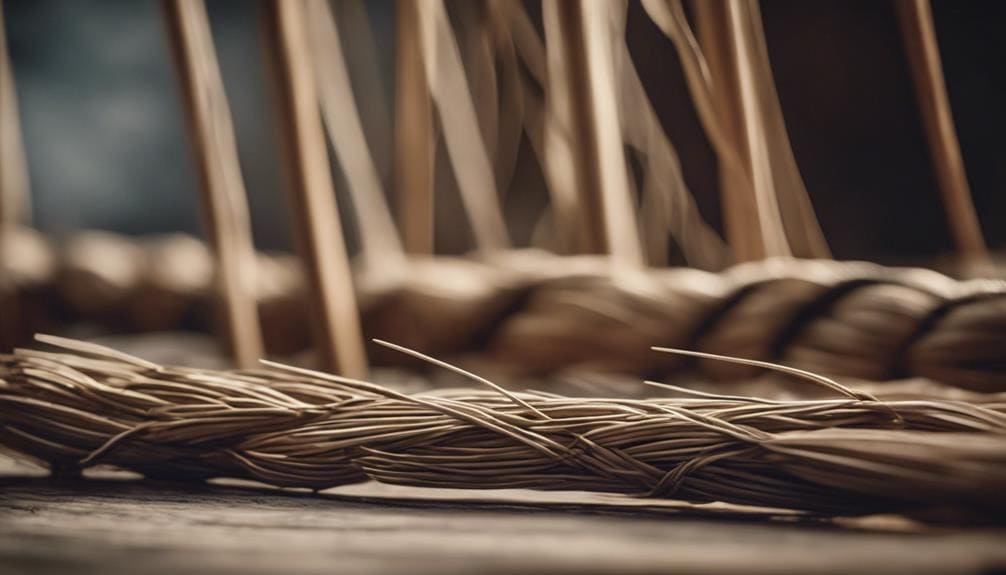
Utilizing Danish Cord for weaving projects introduces a versatile material option that offers strength and flexibility in creating intricate patterns and designs. Danish Cord is available in various cord types, such as 3-ply 10 lb. coils or reels for Denmark weave projects, priced between $158.00 – $163.00. For those seeking more flexibility in material quantity, UNLACED Danish Cord in a 3-ply 2 lb. coil is available for Denmark weave at $36.55 – $38.55.
Additionally, Fibre Rush WHITE, offered in a 2 lb coil of 6/32 size at $12.99, is suitable for various chair seat weaving applications. When engaging in Danish Cord weaving, different weaving techniques can be employed to produce unique patterns and textures. These materials provide a solid foundation for mastering the art of Danish Cord weaving, offering a blend of durability and creativity to bring intricate designs to life.
Step-by-Step Rush Reed Instructions

In seat weaving projects, mastering the step-by-step instructions for working with rush reeds is fundamental for achieving a professional and durable finish. First, ensure your rush reeds are damp to maintain flexibility during weaving. Start by securing the rush reed to the chair frame with tacks, then weave the rush in an over-one, under-one pattern, maintaining consistent tension throughout.
Troubleshooting may be necessary if the rush reeds start to unravel; dampen the area and gently press the rush back into place. Experimenting with different weaving techniques can lead to unique pattern variations, adding a personal touch to your chair seat.
Finally, pay attention to the finishing touches by neatly trimming any excess rush and securing the ends tightly. Properly executed weaving techniques, combined with attention to detail in pattern variations and finishing touches, will result in a beautifully woven chair seat that is sturdy and long-lasting.
Tips for Danish Cord Weaving
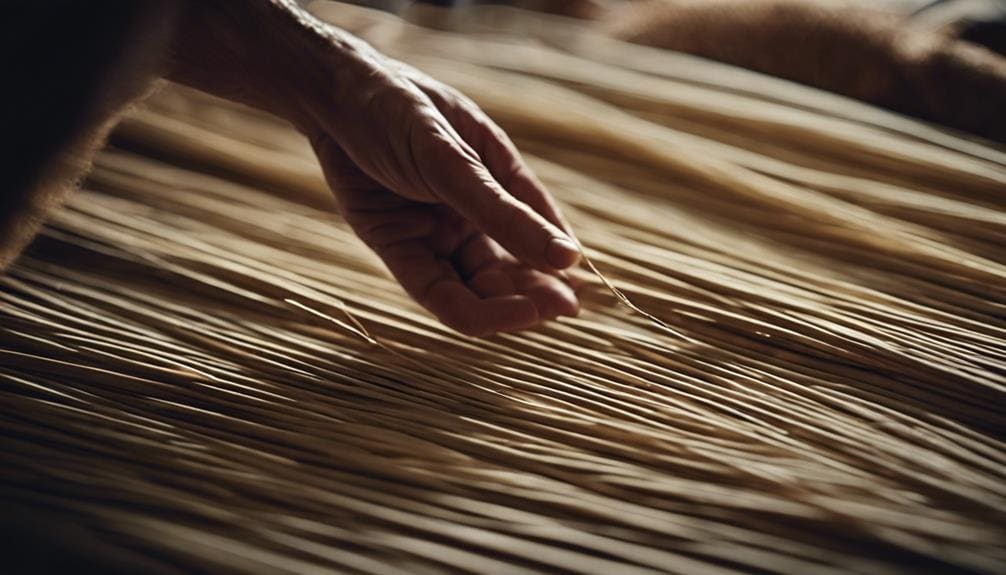
A key consideration when embarking on Danish cord-weaving projects is selecting the appropriate weight and coil size of the cord to ensure a successful and visually pleasing outcome. The 3-ply cord made from tightly twisted paper fiber is commonly used for this weaving technique and is known for its durability and stylish finish.
To advance in Danish Cord weaving, mastering the ‘Denmark Weave’ pattern is crucial for achieving a neat and uniform appearance in your creative projects. For those looking to explore advanced techniques, experimenting with different weights and coil sizes of Danish Cord can lead to innovative designs and intricate patterns.
Understanding the nuances of tension and tightness can elevate your weaving skills and take your projects to the next level. Engaging in classes and workshops offers a hands-on approach for beginners to grasp the fundamentals and gradually progress toward more complex weaving methods. You can unlock the potential for intricate and visually stunning Danish Cord projects by honing these skills.
Common Mistakes to Avoid
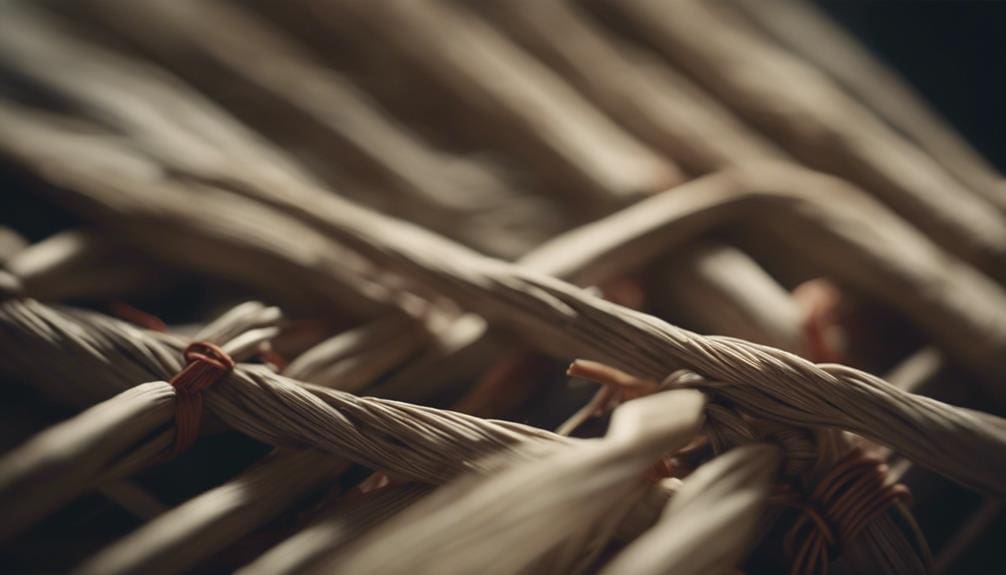
One common pitfall to avoid when engaging in rush weaving is overly tightening the material, resulting in inconsistent tension and an unstable seat. To avoid this issue, it is essential to maintain a balance in the tension applied during the weaving process.
Additionally, breakage prevention is crucial when working with rush reeds. Ensuring the rush reeds are adequately soaked in water before weaving is vital as it helps maintain their flexibility, reducing the risk of breakage.
| Common Mistakes to Avoid | Effects | Prevention Strategies |
|---|---|---|
| Over-tightening rush | Uneven tension, unstable seat | Maintain balanced tension |
| Rush reeds not soaked enough | Breakage during weaving | Properly soak reeds beforehand |
| Skipping steps in the pattern | Poor alignment, messy finish | Take time to align and weave strands |
| Skipping steps in pattern | Errors in the final piece | Follow instructions carefully |
| Inconsistent weaving direction | Uneven appearance | Pay attention to the weaving direction |
Frequently Asked Questions
Is Fiber Rush the Same as Danish Cord?
No, fiber rush and Danish cord are not the same. Fiber rush is a twisted paper used in weaving techniques, whereas Danish cord is a tightly woven paper cord. Each material offers distinct qualities for different projects.
What Is Rush Weaving?
With a rich history, Rush weaving involves intricate techniques to create durable seat bottoms. While physically demanding, the craft offers a rewarding experience. It’s a blend of tradition and skill that adds charm to furniture.
How Long Do You Soak Rush Before Weaving?
When prepping for the rush of weaving, the soaking duration is crucial. Properly soaked rush reeds enhance the weaving process by becoming more pliable and less prone to breakage. This step is essential in various cord weaving styles.
What Are the Different Types of Danish Cord Weaving?
I love exploring the different types of Danish Cord weaving. Traditional techniques blend with modern interpretations, creating intricate patterns and color variations. Each material caters to specific project needs, offering versatility in creating stylish and durable chair seats.
Conclusion
As the rush reeds intertwine and the Danish cord weaves its intricate patterns, a story unfolds within the fibers of the chair. Each twist and turn symbolizes the craftsmanship and dedication required to master these traditional techniques. Just as the threads create a strong and durable seat, so too does the artistry behind them stand the test of time. Embrace the beauty of rush reeds and Danish cord weaving, where every stitch tells a tale of skill and legacy.


